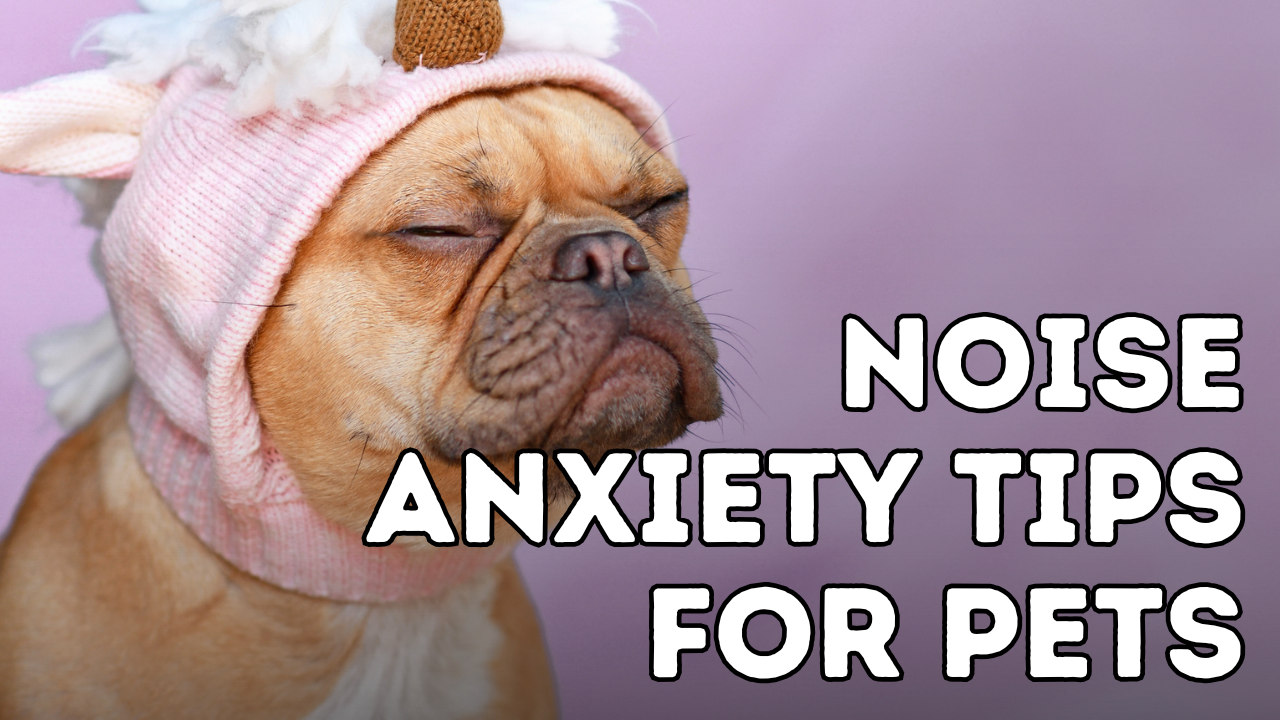Keep Your Pup Calm This Halloween: Essential Noise Anxiety Tips!


How to Keep Your Dog Calm During Halloween: Tips and Effective Solutions
As Dr. Andrew Jones, veterinarian and pet advocate, I’m here to guide you through one of the most challenging seasons for our furry friends—Halloween. Many dogs are sensitive to loud, unexpected noises, and this time of year can be especially overwhelming. Research shows that noise aversion affects nearly one-third of all dogs, making it a common concern among pet owners.
Halloween Noise Triggers: Understanding Your Dog’s Anxiety
Halloween is full of loud, sudden sounds, which can act as triggers for dogs with noise sensitivities. For some, these noises not only cause momentary fear but can also lead to long-term anxiety conditions, like separation anxiety, if not addressed.
How to Help Your Dog Stay Calm
There are steps you can take to help prevent this heightened anxiety. Adding calming ingredients to your dog’s routine can make a significant difference. Ingredients like L-theanine, Melatonin, and Valerian have been shown to help ease canine anxiety. That’s why I’ve formulated a specific supplement for this purpose:
Dr. Jones’ COMPLETE Canine Calming Chews
These chews include these beneficial ingredients to provide natural support for your dog during times of stress.

Combining Calming Chews with CBD for Extra Support
For a fast-acting solution, I also recommend incorporating CBD oil (cannabidiol) into your dog’s regimen. Adding a CBD tincture alongside calming chews can offer even greater relief. I use this approach with my own dog, Tula, and it has proven effective in reducing her anxiety during Halloween.
Our top-selling pet CBD supplement is:
Dr. Jones’ ULTIMATE CBD for Dogs and Cats
By integrating these calming solutions into your dog’s routine, you can help make Halloween and other noisy events more manageable for both of you.


Managing Dog Noise Anxiety: A Guide to Calming Your Canine Companion
By Dr. Andrew Jones
Dog noise anxiety, or the fear of loud sounds like thunderstorms or fireworks, is a common and challenging condition, affecting about 33% of all dogs. For many dogs, this anxiety can range from mild to severe, and may be triggered by a single traumatic event or repeated exposure to loud, startling noises. In my experience, the key is understanding the symptoms, recognizing your dog’s sensitivity, and applying effective strategies to ease their fears.
Understanding Noise Anxiety in Dogs
Dogs have exceptionally sensitive hearing—about ten times better than ours. The sudden crack of thunder can be terrifying for them. This was certainly true for my family dog, Max, who developed a fear of storms after his tail was accidentally slammed in a door during a thunderstorm. From that day on, any storm sent Max into a frenzy of hiding and shaking.
Signs of noise anxiety include panting, pacing, crying, hiding, chewing, or even destructive behavior. These symptoms often worsen without intervention, so addressing them early is crucial.
Prevention and Early Socialization
Socialization: Begin socialization during your dog’s early weeks (3-12 weeks of age), exposing them to various sounds in a positive environment. Pairing noises with treats can create positive associations, helping prevent anxiety later.
Avoid Trauma: Repeated, frightening experiences can increase anxiety. Avoid exposing your dog to traumatic situations where possible, as these can trigger lifelong fears.
No Punishment: Punishing a dog for their fear responses is counterproductive. It can actually worsen their anxiety, making it even harder to manage.
Effective Treatments for Dog Noise Anxiety
For long-term results, it’s essential to train your dog to handle loud sounds calmly while also incorporating natural or supplemental anti-anxiety options.
Behavior Modification Techniques
-
Stay Calm and Unreactive: When your dog shows signs of fear, avoid reinforcing this behavior by being overly comforting. A quick scratch, followed by calm behavior on your part, helps your dog feel that there’s nothing to worry about.
-
Distraction with Positive Reinforcement: During an anxiety episode, use a favorite toy or treat to redirect your pet’s focus, rewarding them when they respond positively. Over time, your dog may associate noises with treats and play, reducing their fear.
-
Create a Safe Space: Crates can provide comfort for some dogs, simulating a den environment. However, this may not work for every dog—some may panic in confined spaces. Always supervise the initial crate experiences to assess their comfort level.
Natural Remedies and Products for Noise Anxiety
Acupressure
Applying gentle pressure to specific points can be calming. I’ve found the Yin Tang point (located between the dog’s eyes, at the bridge of the nose) highly effective. Apply gentle pressure for about 60 seconds; I’ve used this technique successfully with my dog, Tula.
Thundershirt
A snug wrap around the torso, such as a Thundershirt, can provide calming pressure, similar to swaddling. This method has a soothing effect on many dogs, helping to reduce anxiety.
Pheromone Products
Products like Adaptil contain synthetic dog-appeasing pheromones that can be helpful in reducing anxiety related to noises. Combined with desensitization techniques (like sound CDs), they can be particularly effective for fireworks or storm phobia.
Magnesium Supplements
Magnesium plays a role in brain function and can help reduce stress. Dosage typically ranges from 2-5 mg per pound of body weight twice daily. Magnesium citrate and magnesium glycinate are two common forms; glycinate tends to be gentler on the stomach.
Music Therapy
Classical music, particularly, can calm dogs during anxiety-inducing events. The soothing effect of music may help mask frightening sounds, promoting a sense of calm.
CBD Oil
Cannabidiol (CBD) has proven effective for anxiety relief. Dosages of 3-6 mg per 10 pounds every 4-6 hours are recommended. I personally recommend our Dr. Jones’ Ultimate CBD for Dogs and Cats for effective, natural calming.
Herbal Remedies: Valerian, L-Theanine, and Melatonin
- Valerian Root: This herb acts on the brain’s neuroreceptors, decreasing anxiety. Administered twice daily (1 drop per pound of body weight), valerian must be given consistently over two weeks to see benefits.
- L-Theanine: An amino acid derived from green tea, L-Theanine supports long-term anxiety management. Typical doses range from 50-100 mg per 10 pounds, one to two times daily.
- Melatonin: The sleep hormone melatonin can also be effective in managing dog anxiety. A dose of 2 mg per 20 pounds (up to a max of 6 mg) about an hour before stressful events works well for many pets, including my own Tula.
Helping your dog through noise anxiety is a multi-step approach: minimize exposure to loud noises, create a calming environment, and consider natural calming aids or supplements. Many pet owners report success with a combination of products like the Thundershirt, calming music, and supplements with L-theanine, valerian, chamomile, and melatonin.
Our Complete Canine Calming Chews are designed with these ingredients to provide gentle, effective relief. For fast-acting support, try our Ultimate CBD for Dogs and Cats—especially helpful during fireworks or thunderstorms.
P.S. Noise anxiety can be managed with patience and care. Small steps, like playing classical music or using a snug wrap, make a big difference. Here’s to a calmer, happier life for you and your pet!



Thank you for the great advice regarding how to deal with noise anxiety (in my case particularly with my two little dogs:- both Shitzu crosses. It’s the Halloween season & also the ‘build up’ to Bonfire night…the 5th November where we have all sorts of loud fireworks ‘going off’ left, right & centre here. It can be quite distressing for the boys.I do try & remain as calm as I possibly can…but the fireworks can be relentless.